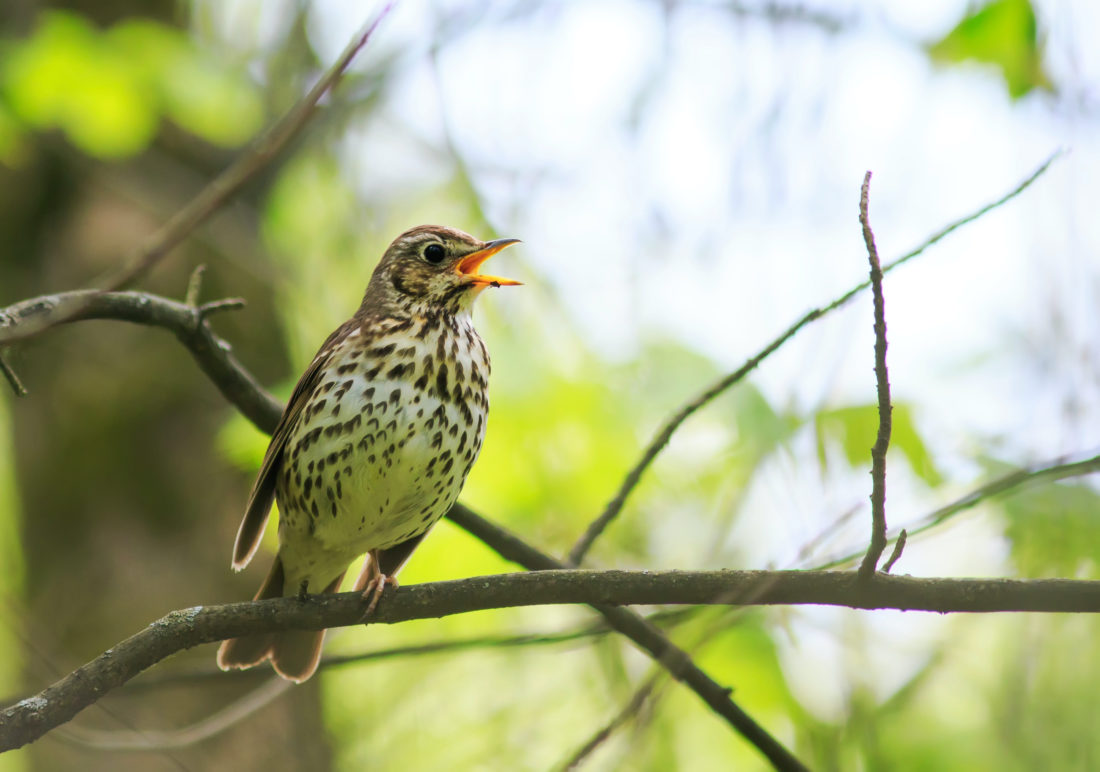It’s a time of year to pay attention: From now until mid-October, fall bird migration is in full swing, with raptors and songbirds alike making long, often cross-continent journeys to summering grounds farther south. “At this time of year, you can step outside every morning and see what has landed overnight,” says Curtis Smalling, the director of conservation at Audubon North Carolina. Here are some tips for enjoying the show, supporting the birds, and using a new, interactive mapping tool debuting today from Audubon and some of the biggest names in bird conservation.
Eyes (and Ears) to the Skies
All over the Southeast, fall migrants are passing through, including night-flying songbirds like warblers, thrushes, and tanagers. (Tonight, BirdCast predicts that 228 million birds will be on the move across the country.) During the day, look out for them as they forage and rest in patches of available habitat like parks or along creeks and rivers. “And about an hour after sunset, step out in your backyard or on your deck and just listen,” Smalling advises. “You’ll hear all these little peeps and chirps, because sometimes there’s 300,000 birds passing overhead, all talking to each other.”
The birds tend to crowd along coastlines and follow major landforms like mountains and rivers. “Each part of the Southeast has its prime spots, and it’s a great time to visit your favorite greenway or paddle your favorite creek,” he says. And not all the visitors are nocturnal; others, like chimney swifts and raptors, are on the move during the day, making them easier to sight.
Giving a Wing Up
“Everybody can appreciate the fact that some little bird that weighs the equivalent of two quarters visits someone’s backyard as they fly 2,000 miles to Nicaragua and back,” Smalling says. “It’s humbling and also motivating for us to do what we can do to help them on their journey.” One easy measure is flipping out the lights come sunset; songbirds rely on celestial cues and earth’s magnetic field to guide them, and artificial lights can confuse them. Smalling also recommends keeping cats indoors during September and October, putting bird tape on windows to mitigate collisions, putting out winter bird feeders now, and providing native plants that flower in the fall, like sunflowers, sage, and mint. “Even if you live on a fourth-floor condo somewhere, you can put a potted plant on your porch and help feed a hummingbird on its way.”
A New Tool from the Bird Brain Trust
This morning, timed to celebrate the fall migration, Audubon and nine other founding partners (including Cornell Lab of Ornithology and Birds Canada) released a brand new tool called the Bird Migration Explorer. Two years in the making, the interactive site gathered data from over 500 studies to provide a window into the continent-spanning migrations that birds undertake every year, with a focus on telling individual stories and highlighting conservation concerns. For 458 species, site visitors can observe exactly where the birds are at any time of the year, as well as view and learn about the conservation challenges they face at each stage of their migration—from light pollution to car strikes to coastal development.
“If you enter your city, it’ll tell you how many migratory birds have passed through there, and how many countries your city is connected to by that bird,” says Ben Graham, Audubon North Carolina’s communications director. “You might get a hit in far northern Canada and then down in the Brazilian Amazon. The tool allows us all to visualize just how much birds connect us to other places and how conservation requires us to act in our own backyards.”
Below, see how the tool maps broad-winged hawks moving up and down the southern Appalachians:









